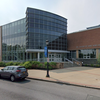State website details policies on bell-to-bell smartphone ban for each school district
A new website — ny.gov/phonefree — was launched on Aug. 14 so that parents and students in schools across New York can look up their district’s plan for implementing the state-required bell-to-bell smartphone restrictions with the new school year.
About 96 percent of the approximately 1,090 total districts and schools covered by the statewide requirement have developed policies, according to a release from the governor’s office.
Locally, this includes Berne-Knox-Westerlo, Bethlehem, Guilderland, and Voorheesville. Bethlehem adopted its policy in 2020; the other three districts adopted their policies this year.
Schools were allowed to develop their own plans for storing smartphones during the day and were to consult parents, teachers, and students in developing a policy; the state earmarked $13.5 million to help some schools purchase storage devices.
New York’s statewide standard for kindergarten through 12th grade prohibits unsanctioned use of smartphones and other internet-enabled personal devices on school grounds for the entire school day, including classroom time and other settings like lunch and study hall periods.
It also requires schools to give parents a way to contact their children during the day when necessary and it prevents inequitable discipline.
The state policy does authorize access to simple cellphones without internet capability, as well as internet-enabled devices officially provided by schools for classroom instruction, such as laptops or tablets used as part of lesson plans.
The state policy also defines several exemptions to smartphone restrictions, including for students who require access to an internet-enabled device to manage a medical condition; where required by a student’s Individualized Education Program; for academic purposes or for other legitimate purposes, such as translation, family caregiving, and emergencies.
— Melissa Hale-Spencer



